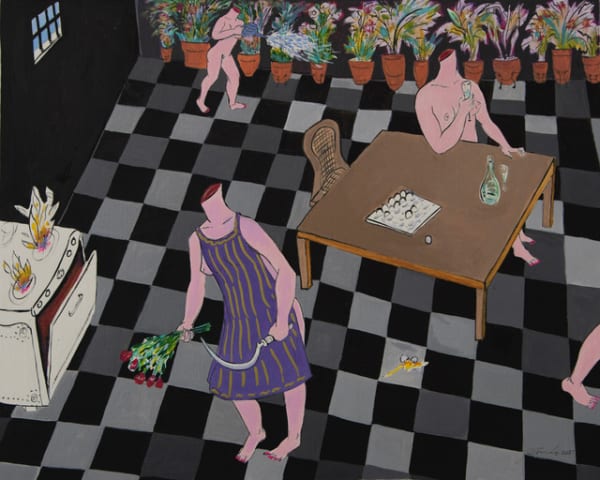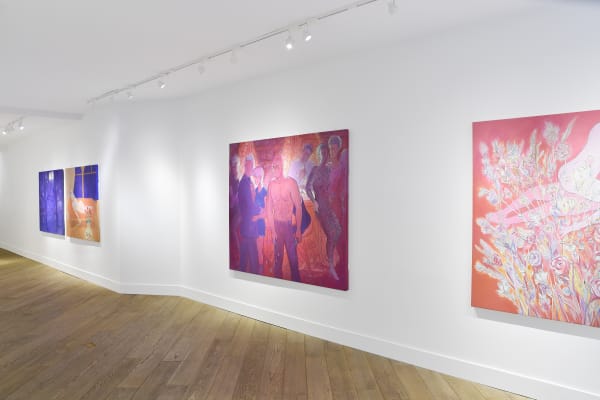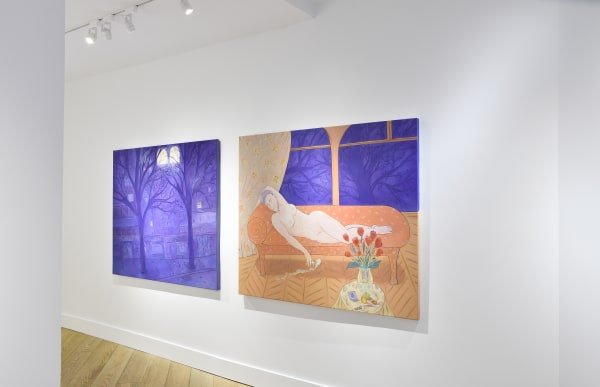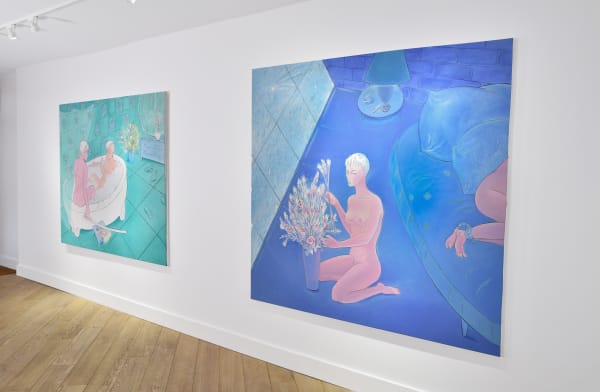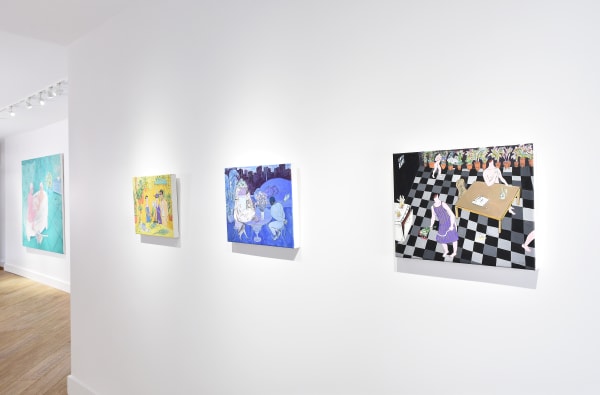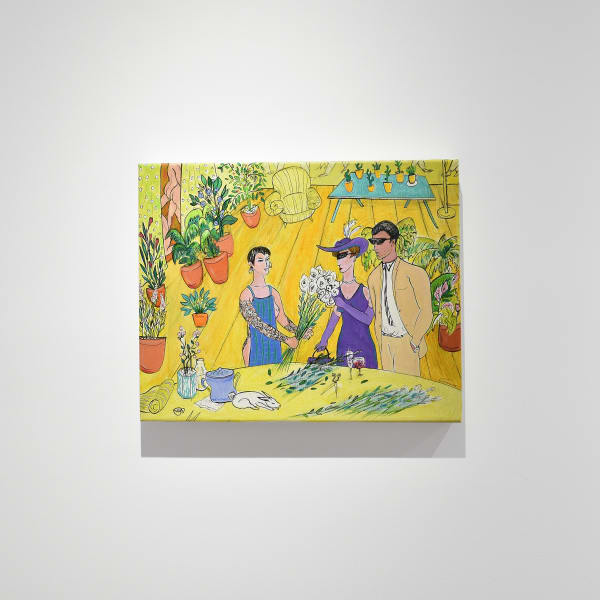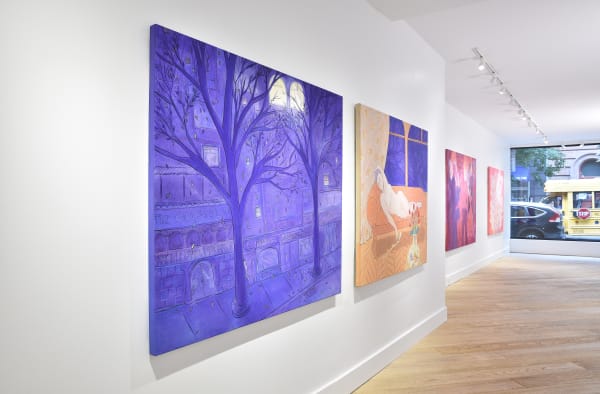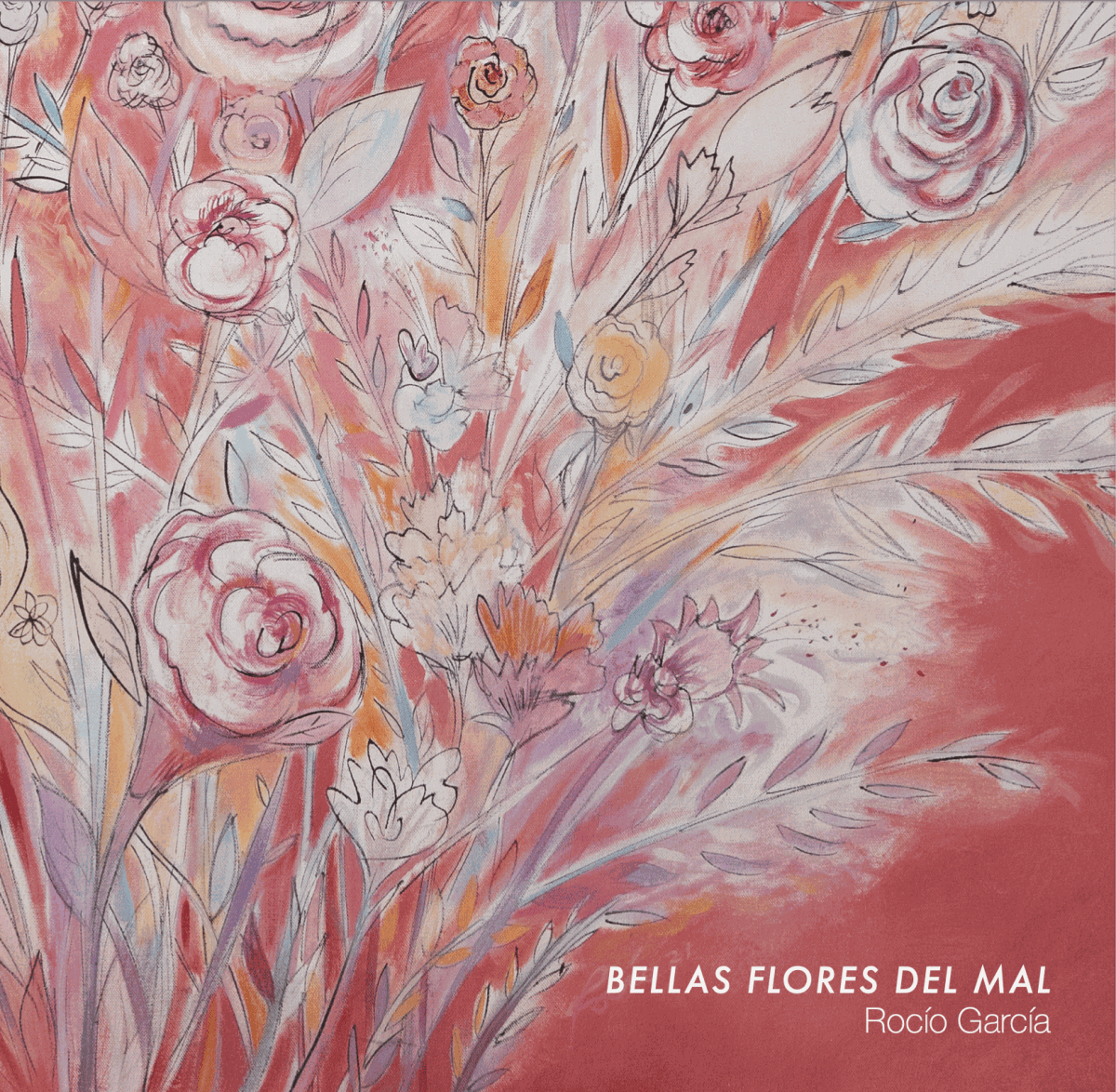Bellas flores del mal: Rocío García
A bed never frequented by remorse.
And coffin, alcove, rich in blasphemy,
As two good sisters would, offer as treats,
Terrible pleasures, horrifying sweets.
Charles Baudelaire, The Two Good Sisters, The Flowers of Evil, 1857
With a five-decade long career, Rocío García’s (b. Cuba, 1955) voice is one of the most coherent, iconic, and universal languages of the contemporary art scene in Cuba; the line, the monochromatic provocation, the disregard for naturalism, the scene-based nature, the sense of humor, the dysfunctional, the theater of life, the fragility of maleness, the voyeurism and ultimately, the passion, make her paintings a staging of power in its most complex expression. That is, power as an existential act. Her characters—policemen, sailors, nocturnal hustlers, bartenders, rabbits, punishers, geishas—are metaphors, that more than stereotypes judged at face value, represent an exercise of personal search, the long arms of all that can be, the dream of not being beholden to a singular identity, the ultimate freedom. Rocío’s painting remains there, in that non-place, in Augé's space of anonymity: in the dark corners of a bar, in hotel rooms, on the unstable limits of gender, sex and love. Eternally transient paintings, free of the constraints of history, relationships and identity.
Her debut exhibition at Thomas Nickles Project, Bellas Flores del Mal, showcasing a total of nine never-before-seen paintings, continues her voracious exploration of all that it means to be human. Through scenes of secretly evolving intrigues, obscure mysteries, and unknown intimate stories, Rocío examines power, love, desire, sexuality, and violence with a focus on the double-edged subtlety in the conception of love: the sublime and the sinister.
A rekindling of a series begun in 2017 as a homage to Matisse, the painter explains that "There are filmmakers, writers, artists who have projects that take years to come true. And it happens to me that sometimes I make a painting and it's not enough, I need to make others that can make the idea grow. The series I put together as sequences are born out of that need. With this series I could not continue for different reasons. I started it with a work as an homage to Matisse in 2017 (Belles Fleurs du mal, after Baudeliare’s volume of poetry, Les Fleurs du mal, 1857, today in the collection of NG Gallery, Panama), and its pulse kept beating, but the impulse became lighter and lighter to the point that I thought I was losing it. I did other series, other solo exhibitions and, at the end of 2020, when the world seemed transformed by the virus, the spell began. Someone very important came into my life and I felt again intensely that duality that determines us in the face of the transcendent. The feeling that people, humanity, are bent on destroying the beauty.”
This union of opposites—the sacred and the demonic—and the duality of beauty are the central impulses of the works in this exhibition. Bellas Flores del Mal seems, at times, an exercise of conclusion, as if the painter had arrived with these works to some truth that intertwines love and death. Like at the end of some long, twisting road, or perhaps at the beginning, Rocío displays a double-edged subtlety in the conception of beauty and love: the sublime and the sinister, the beauty that torments us but to which we aspire.
The characters in this series love, kill, and die. They return from other worlds, other series, from The Thriller, from Sakura, trying to escape, to save themselves, or just trying to be alive and all that comes with that. They are those bodies, some sheathed in flowers, which are not responsible for the effects they produce. Bellas Flores del Mal is a lesson on painting and a lesson on life—a lesson which, like the simplest truth, hurts.
Rocío García’s premiere solo exhibition in New York, Bellas Flores del Mal, will be on view at Thomas Nickles Project, 47 Orchard Street, New York, NY 10002, from September 22nd through January 2nd, 2022.
Rocío García (b. Santa Clara,Cuba, 1955) graduated from the San Alejandro School of Fine Arts in 1975 and began teaching there in 1983 after she received her MFA at the Repin Academy of Fine Arts in Leningrad, Soviet Union. She was an Artist in Residence at the Vermont Studio Center (2010), the University of Michigan (1997) and the Ludwig Foundation of Cuba in Basel, Switzerland (2007). Rocío’s work has been widely exhibited inside and outside Cuba, received multiple awards and is held in several private and public collections. With Rocío García, however, the best is always yet to come.
The artist lives and works in Vedado, Havana, Cuba.








